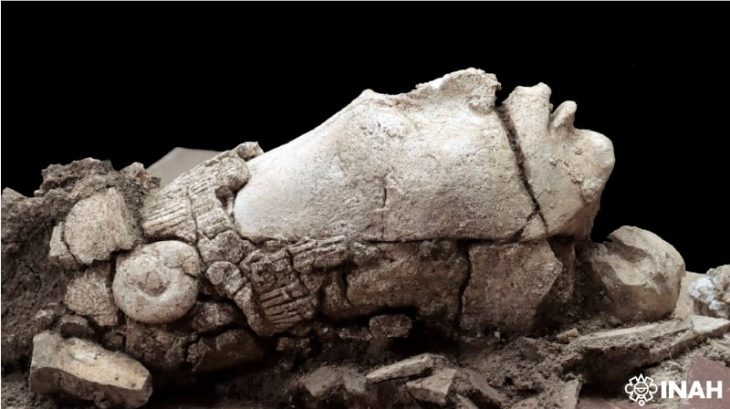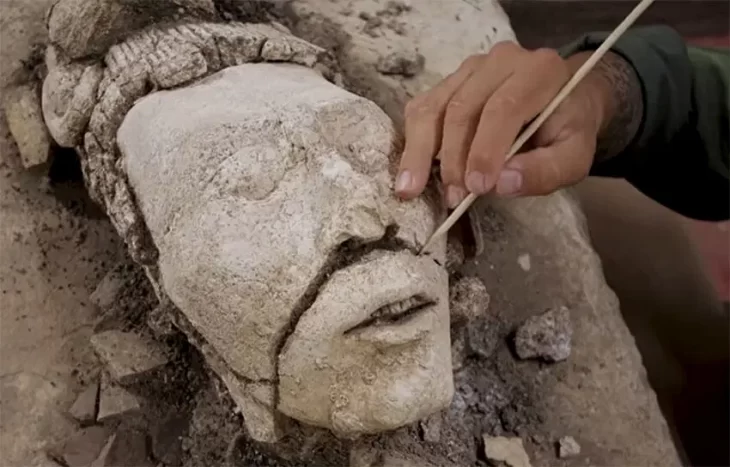Archaeologists working at the famed Palenque archaeological site in Chiapas, Mexico, unearthed a 1,300-year-old sculpture depicting the head of the Young Maize God.
The find, made by the National Institute of Anthropology and History (INAH) in 2021, only recently came to light. The head was located within the palace complex, specifically during the clearing of debris from a corridor connecting two buildings. Interestingly, the sculpture wasn’t simply lying on the ground – it was found submerged in a small pond within a container.

Experts believe this placement was deliberate and symbolically significant. The Maya viewed the universe as divided into three realms: the heavens, the earth, and the underworld, Xibalba. Sacred locations like caves and cenotes were seen as gateways to Xibalba, which housed the Maya gods of death. The watery environment surrounding the head likely represented an entrance to this underworld.
“The discovery allows us to further understand how the ancient Maya of Palenque relived the mythical passage about the birth, death, and resurrection of the maize deity,” explained INAH researcher Arnoldo González Cruz.
The severed head sculpture, originally positioned on a tripod, depicts a youthful visage. Crafted from plaster, it measures approximately 45 centimeters long, 16 centimeters wide, and 22 centimeters high. Notably, the head faces east-west, symbolizing its connection to the rising sun – a powerful force believed to be instrumental in maize growth.
The sculpture itself displays meticulous detail. The young god possesses a sharp, prominent chin, thin lips with a slightly downturned lower lip, and visible central incisors. The eyes are narrow and elongated, while the cheekbones are thin and rounded. The broad forehead slopes into a prominent, rectangular nose.
Experts believe stylistic elements, particularly the accompanying plate referencing the “Tonsured” Maize God (referencing a haircut symbolizing ripe corn), point towards the sculpture’s origin in the Late Classic Period (700-850 CE).
This discovery, registered during the 2021 season of the “Architectural Conservation and Decorative Features of El Palacio” project, funded by the U.S. Department of State’s Ambassadors Fund for Cultural Preservation, offers a fascinating glimpse into the Maya reverence for maize, a staple crop that held immense cultural and religious significance.
